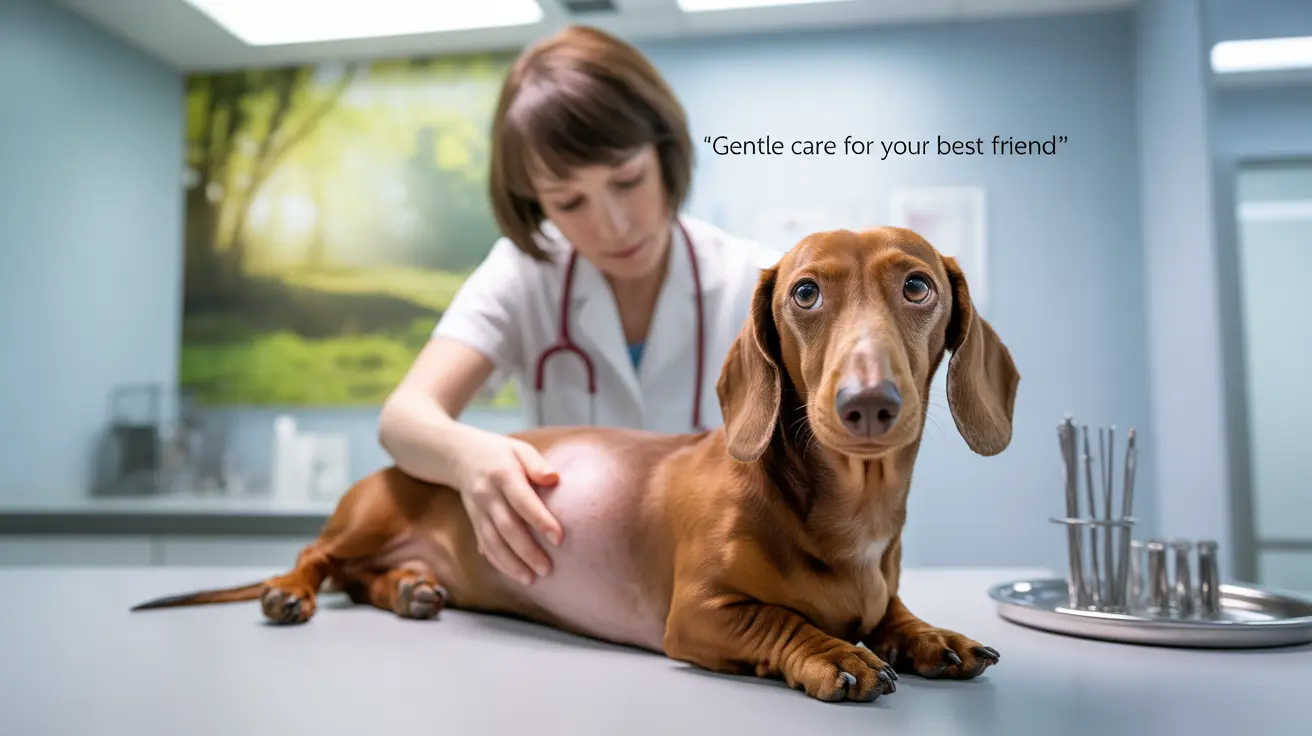When pet owners notice their dog's vulva is swollen, it can be concerning and confusing. This comprehensive guide will help you understand the various causes of a swollen vulva in dogs, from normal physiological changes to medical conditions requiring veterinary attention.
Whether you have an intact female dog experiencing her heat cycle or a spayed pet showing unexpected swelling, understanding the underlying causes and recognizing when to seek veterinary care is crucial for your dog's health and well-being.
Natural Causes vs. Medical Concerns
The most common natural cause of a swollen vulva in dogs is the heat cycle (estrus). During this time, the vulva becomes noticeably enlarged and may be accompanied by a bloody discharge. This typically occurs twice yearly in intact females and resolves naturally as the cycle ends.
However, medical conditions can also cause vulvar swelling, including infections, anatomical abnormalities, and more serious health issues. Understanding the difference between normal and concerning swelling is essential for proper care.
Common Causes and Their Symptoms
Heat Cycle (Estrus)
- Bloody discharge
- Increased urination
- Changes in behavior
- Attraction of male dogs
Infections and Inflammation
- Abnormal discharge
- Excessive licking
- Redness and irritation
- Discomfort during urination
Anatomical Issues
- Recessed vulva
- Excess skin folds
- Vaginal hyperplasia
- Congenital abnormalities
Diagnosis and Treatment Options
Veterinary Examination
- Physical examination
- Vaginal cytology
- Urinalysis
- Blood tests if necessary
- Imaging in some cases
Treatment Approaches
- Antibiotics for bacterial infections
- Antifungal medications for yeast infections
- Surgery for anatomical abnormalities
- Monitoring for heat-related swelling
Prevention and Home Care
Maintaining good hygiene is crucial for preventing problems:
- Regular cleaning of the vulvar area
- Keeping the area dry
- Managing weight to prevent skin fold issues
- Regular veterinary check-ups
When to Seek Veterinary Care
Contact your veterinarian immediately if you notice:
- Excessive swelling or discharge
- Signs of pain or discomfort
- Difficulty urinating
- Loss of appetite or lethargy
- Fever or other systemic symptoms
Frequently Asked Questions
What are the common causes of a swollen vulva in dogs besides the heat cycle?
Common causes include bacterial or yeast infections, anatomical abnormalities, trauma, hormonal disorders, and in rare cases, tumors. Vaginitis, urinary tract infections, and foreign bodies can also cause swelling.
How can I tell if my dog's swollen vulva is due to an infection or something more serious?
Signs of infection include abnormal discharge, excessive licking, redness, and discomfort. More serious conditions may be accompanied by lethargy, fever, loss of appetite, or difficulty urinating. Any persistent swelling should be evaluated by a veterinarian.
What symptoms should prompt me to take my dog with a swollen vulva to the veterinarian immediately?
Seek immediate veterinary care if you notice severe swelling, pus-like discharge, signs of pain, difficulty urinating, fever, lethargy, or loss of appetite. These symptoms could indicate a serious condition requiring prompt treatment.
How is vaginitis in dogs diagnosed and treated by veterinarians?
Veterinarians diagnose vaginitis through physical examination, vaginal cytology, and sometimes cultures or additional testing. Treatment may include antibiotics, anti-inflammatory medications, or addressing underlying causes such as anatomical abnormalities.
Can anatomical abnormalities cause recurrent vulvar swelling in my dog, and how are they managed?
Yes, anatomical issues like recessed vulva or excess skin folds can cause recurring problems. Management may include regular cleaning, weight management, and in some cases, surgical correction through procedures like vulvoplasty.
Conclusion
While a swollen vulva in dogs can be concerning, understanding the various causes and knowing when to seek veterinary care is crucial. Many cases are normal physiological responses or easily treatable conditions, but proper diagnosis and care are essential for your dog's health and comfort.






